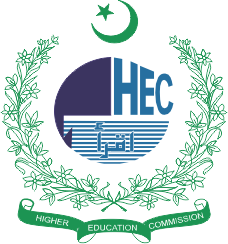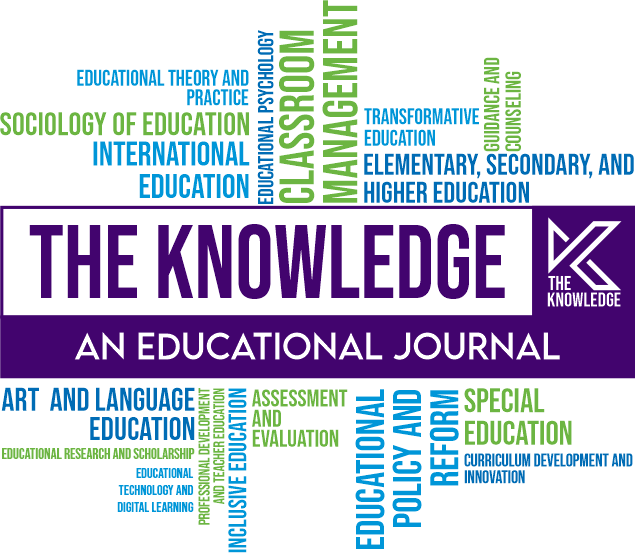Language Medium Dynamics in Pakistani Education: A Historical Analysis
DOI:
https://doi.org/10.63062/tk/2k22a.13707Keywords:
Language Medium, Pakistan, Education, Punjab, Pashto, Sindhi, Siraiki, Baluchi, EnglishAbstract
Punjabi, Pashto, Sindhi, Siraiki, and Baluchi are Pakistan's main languages. Although Urdu is the national language, English is still spoken in significant areas like higher bureaucracy and the armed forces officer corps, a remnant of British colonialism. This manuscript examines Pakistan's language medium dispute regarding English-only schooling for the privileged before partition. An English-educated Anglicized elite was expected to maintain British rule in their own interests, strengthening the empire. Thus, most provinces taught the masses in Urdu, save Sind, where Sindhi was used. This method produced a cost-effective subordinate workforce. In modern Pakistan, the elite attend exclusive English-medium schools, whereas most other schools, especially in metropolitan Sind, have a large Urdu population and teach in Urdu. The indigenously educated proto-elite, mostly Urdu-trained, opposes this duality and wants Urdu as the medium of education. Their argument is that such a transition will help them rise in power, countering the current preference for English education.
References
Abdullah, S. (1976). Pakistan Mein Urdu Ka Masla (The Problem of Urdu in Pakistan). Lahore: Khiaban-e-Adab.
ABE (1949). Proceedings of the Second Meeting of the Advisory Board of Education 7–9 February 1949. Karachi: Manager of Publications, Ministry of Education.
ABE (1950). Proceedings of the Fourth Meeting of the Advisory Board of Education for Pakistan Lahore 29 November–1st December 1950. Karachi: Manager of Publications, Ministry of Education.
ABE (1955). Proceedings of the Fifth Meeting of the Advisory Board of Education, 4–5 March 1953. Karachi: Manager of Publications, Ministry of Education.
ABE (1958). Proceedings of the Seventh Meeting, 27–29 January 1958. Karachi: Manager of Publications, Ministry of Education.
Alam, S. S. (1991). Language as political articulation: East Bengal in 1952. Journal of Contemporary Asia, 21(4), 469-487. https://doi.org/10.1080/00472339180000311
Alavi, H. (1987). Pakistan and Islam: Ethnicity and ideology. In F. Halliday and H. Alavi (eds) State and Ideology in the Middle East and Pakistan. New York: Monthly Review Press.
Alcott, B., & Rose, P. (2015). Schools and learning in rural India and Pakistan: Who goes where, and how much are they learning? PROSPECTS, 45(3), 345–363. https://doi.org/10.1007/s11125-015-9350-5
Amin, T. (1988). Ethno-National Movement of Pakistan: Domestic and International Factors. Islamabad: Institute of Policy Studies.
Basu, A. N. (1947). Education in Modern India. Calcutta: Orient Book Co.
Batool, C. (2021). Linguistic Landscape of Languages Used in Signboards in Larkana, Sindh. Journal of Literature, Languages and Linguistics. https://doi.org/10.7176/jlll/80-03
Bhattacharya, U. (2016). Colonization and English ideologies in India: a language policy perspective. Language Policy, 16(1), 1–21. https://doi.org/10.1007/s10993-015-9399-2
Brass, P. (1974). Language, Religion, and Politics in North India. Cambridge: Cambridge University Press.
Census. (1951). Census of Pakistan. Karachi: Manager of Publications, Government of Pakistan.
Census. (1981). Census Report of Sind Province. Islamabad: Population Census Organization, Statistics Division (1984).
CNE (1959). Report of the Commission on National Education. Karachi: Ministry of Education.
Cooper, R. L. (1989). Language Planning and Social Change. Cambridge: Cambridge University Press.
David, M. K., Ali, M., & Baloch, G. M. (2017). Language shift or maintenance: The case of the Sindhi language in Pakistan. Language Problems and Language Planning, 41(1), 26–45. https://doi.org/10.1075/lplp.41.1.02dav
Dittmer, K. (1972). Indischen Muslims und die Hindi-Urdu Kontroverse in den United Provinces. Wiesbaden: Otto Harrassowitz.
Education Commission (1883). Report of the Indian Education Commission. Calcutta: Superintendent of Government Printing.
Education Department (1991). Evaluation Report on the Primary Pashto Test Books Translation Project. Peshawar: Education Department, Government of the NWFP.
Education in India (1941). Education in India: 1938–1939. Delhi: Manager of Publications.
Evans, S. (2002). Macaulay’s Minute Revisited: Colonial Language Policy in Nineteenth-Century India. Journal of Multilingual and Multicultural Development, 23(4), 260–281. https://doi.org/10.1080/01434630208666469
Fishman, J. A. (1972). Language and Nationalism: Two Integrative Essays. Rowley, MA: Newbury House.
Ghaffar, K. (1969). My Life and Struggle: Autobiography of Badshah Khan. Delhi: Hind Pocket Books.
Hussain, A. (1979). Elite Politics in an Ideological State: The Case of Pakistan. Folkestone: Dowson & Sons.
Hussain, Z. (ed.) (1938). Basic National Education: Report of the Zakir Hussain Committee. Sagaon, Wardha: Hindustani Talimi Sangh.
Jafar, I. (1992). The parting of ways. Dawn Magazine, 4 August.
Jang, K. Y. (ed.) (1940). Report of the Kamal Yar Jang Committee. Calcutta: Secretary of the Committee.
Jervis, G. (1847) Minute, 24 February. In J.A. Richey (ed.) (1922) Selections from Educational Records 1840–1859: Part 2 (pp. 11–14). Calcutta: Superintendent of Government Printing.
Kabir, M. (1987). Religion, language, and nationalism in Bangladesh. Journal of Contemporary Asia, 17(4), 473-487. https://doi.org/10.1080/00472338780000321
Kammi, S. (1988). Punjabi Zaban Naheen Mare Gi (The Punjabi Language will not die). Jhelum: Majidiya Maktab.
Khan, A. (1967). Friends Not Masters: A Political Biography. Karachi: Oxford University Press.
LAD (Legislative Assembly Debates — Sind and Pakistan). Dates and other details are given in the text.
Macaulay, T. B. (1835). Minute on the necessity of English education, 2 February. In H. Sharp (ed) (1920) Selections from Educational Records: Part 1 — 1781–1839. Calcutta: Superintendent of Government Printing.
Malaviya, M. M. (1897). Court Character and Primary Education in the N. W. Provinces and Oudh (Appendix 2). Allahabad: The Indian Press.
Mohanty, P. (2002). British Language Policy in 19th century India and the Oriya Language Movement. Language Policy, 1(1), 53–73. https://doi.org/10.1023/a:1014500828789
Qaisar, I. & Pal, J. A. (eds) (1988). A’almi Punjabi Conference 1986 (World Punjabi Conference, 1986). Lahore: Classic.
Rahman, T. (1996a). Language and Politics in Pakistan. Karachi: Oxford University Press.
Rahman, T. (1996d) The Balochi/Brahvi language movements in Pakistan. Journal of South Asian and Middle Eastern Studies, 19(3), 71–88. https://www.proquest.com/openview/b272a214b1417a8f3cee2755344fa710/1?pq-origsite=gscholar&cbl=1817158
Rahman, T. (1995a). Language Planning and Politics in Pakistan. Islamabad: Sustainable Development Policy Institute.
Rahman, T. (1995b). Language and politics in a Pakistan province: The Sindhi language movement. Asian Survey, 35(11), 1005-1016. https://doi.org/10.2307/2645724
Rahman, T. (1995d). The Pashto language and identity‐formation in Pakistan. Contemporary South Asia, 4(2), 151-170. https://doi.org/10.1080/09584939508719759
Rahman, T. (1995e). The Siraiki movement in Pakistan. Language Problems and Language Planning, 19(1), 1-25. https://doi.org/10.1075/lplp.19.1.01rah
Rahman, T. (1996c). British language policies and imperialism in India. Language Problems and Language Planning, 20(2), 91-115. https://doi.org/10.1075/lplp.20.2.01rah
Rahman, T. (1997). The medium of instruction controversy in Pakistan. Journal of Multilingual and Multicultural Development, 18(2), 145-154. https://doi.org/10.1080/01434639708666310
Rahman, T. (1997). The Urdu —English controversy in Pakistan. Modern Asian Studies, 31(1), 177-207. https://doi.org/10.1017/s0026749x00016978
Raleigh, T. (1906). Lord Curzon in India: Being a Selection from his Speeches as Viceroy and Governor General 1898-1905. London: Macmillan.
Rashdi, M. (1984). Letter to Dr Waheed Qureshi, 20 September (Typescript). Institute of Sindhology, Hyderabad.
RCSP (1966). Report of the Commission on Student Problems and Welfare: Summary of the Important Observations and Recommendations. Islamabad: Ministry of Education.
Richey, J. A. (ed.) (1922). Selections from Educational Records 1840–1859: Part 2. Calcutta: Superintendent of Government Printing.
Robinson, F. (1974). Separatism Among Indian Muslims: The Politics of the United Provinces Muslims 1860–1923. Cambridge: Cambridge University Press.
RPI Oudh (1869). Report on Public Instruction in Oudh 1868–1869. Lucknow: Director Public Instruction, Oudh.
RPI Punjab (1871). Report on Popular Education on the Punjab and its Dependencies 1870–1871. Lahore: Civil & Military Gazette Press.
RPI Punjab (1877/1888). Report in Public Instruction: Punjab. Lahore: Civil & Military Gazette.
Shackle, C. (1970). Punjabi in Lahore. Modern Asian Studies, 4(3), 239–267. https://doi.org/10.1017/s0026749x00011926
Shackle, C. (2006). Pakistan: Language Situation. Elsevier EBooks, 127–129. https://doi.org/10.1016/b0-08-044854-2/01700-4
Sharp, H. (1918). Progress of Education in India 1912–1917. Seventh Quinquennial Review. Calcutta: Superintendent of Government Printing.
Shirani, H. M. (1928). Punjab Mein Urdu (Urdu: Urdu in the Punjab). Lahore: Kitab Numa.
Talpur, M.Y. (1969). A Memorandum on Proposals for a New Educational Policy and Sindhi Language (Publication No. 3). Hyderabad: Jeay Sind Naujawan Mahaz.
Trevelyan, C. E. (1838). On the Education of the People of India. London: Longmans.
Zaheer, H. (1994). The Separation of East Pakistan. Karachi: Oxford University Press.
Zia, R. (2003). Religion and Education in Pakistan: An Overview. PROSPECTS, 33(2), 165–178. https://doi.org/10.1023/a:1023690712978
Zulfiqar, G. & Akhtar, N. (eds) (1986). Qaumi Zaban Ke Bare Men Ahem Dastavezat (Vol.2) (Part 1). Islamabad: Muqtadra Qaumi Zaban.




